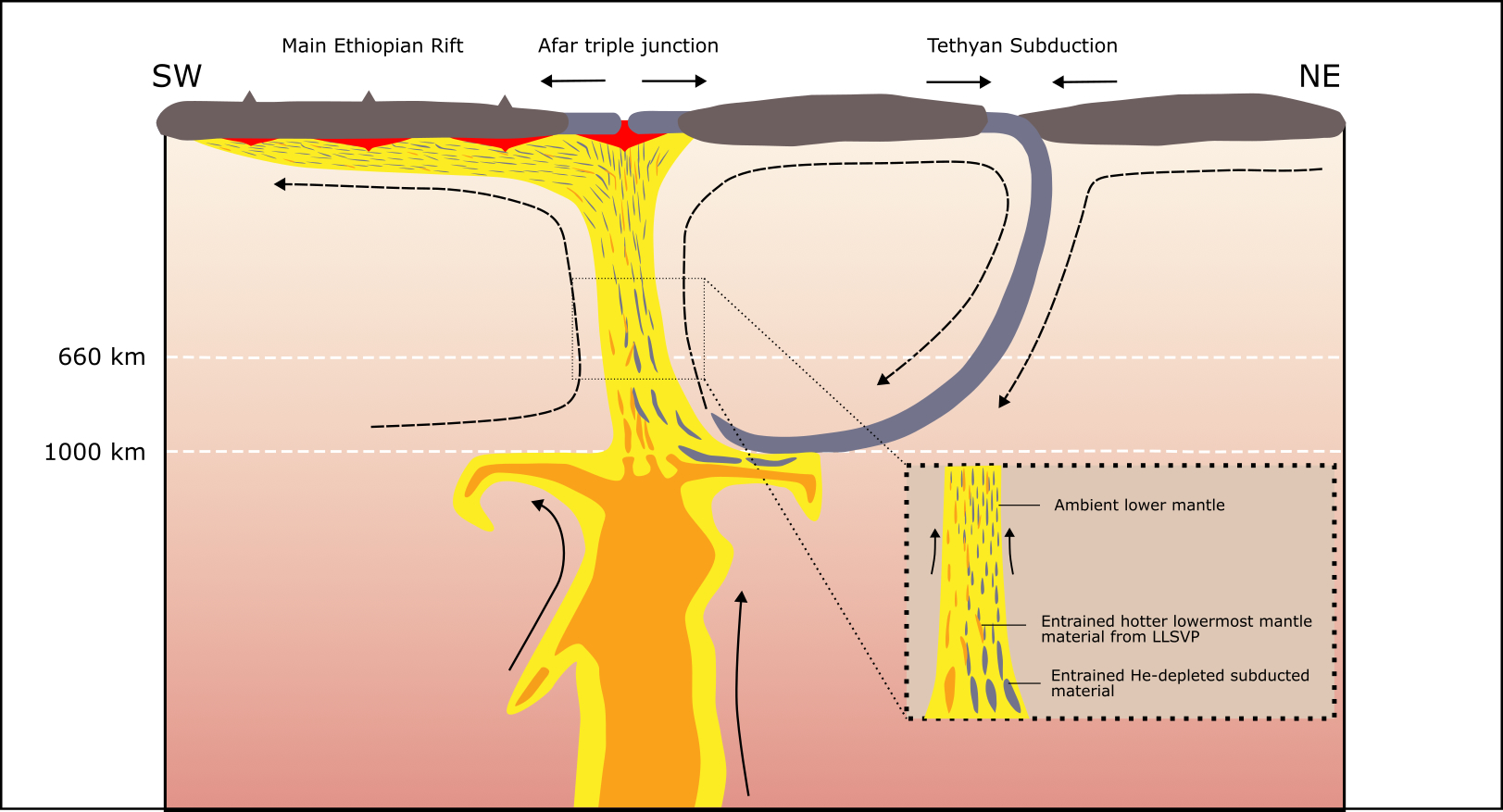Research offers new insight into deep Earth processes
Published: 25 September 2024
Sophisticated analysis of tiny bubbles of ancient gas trapped in volcanic rocks combined with new geophysical modelling has cast new light on long-held assumptions about the deep Earth.
Sophisticated analysis of tiny bubbles of ancient gas trapped in volcanic rocks combined with new geophysical modelling has cast new light on long-held assumptions about the deep Earth.
An international team of scientists led by researchers from SUERC and the University of Glasgow’s School of Geographical & Earth Sciences, have uncovered surprising results in a new study of volcanic lavas which erupted in the Red Sea from the Afar mantle plume.
Mantle plumes are columns of unusually hot rock which rise to the Earth’s surface from the boundary between the core and mantle, 2,900 km below ground. They fuel volcanic activity wherever they force their way to the surface, often with enough energy to split the continents apart.
The current scientific consensus is that plumes transport ‘primordial’ material created when the Earth formed from the deep mantle to the surface. If that is the case, volcanic rocks formed when that magma erupted should contain significant traces of primordial material.
However, the researchers found that volcanic rocks dredged from the floor of the Red Sea instead contained very low concentrations of helium, a primordial gas, than is required by the prevailing models of the Earth.
In a new paper published in the journal Nature Communications Earth & Environment, the team conclude that the Afar plume is in fact dominated by material that has previously been at the Earth’s surface.

Their findings, published as a paper in the journal, are based on mass spectrometry analysis of samples of basaltic glass collected from Red Sea and the Gulf of Tadjoura. The analysis suggests that mantle plumes are complex mixtures of primitive deep mantle and rocks from the ocean floor that have been recycled back into Earth’s interior by a process known as ‘subduction’.
Basaltic glass forms when lava is erupted into seawater and cools rapidly, trapping the initially dissolved gases as bubbles. The team at the Scottish Universities Environmental Research Centre (SUERC) measured the two helium isotopes (helium-3 and helium-4) in gases trapped in the Red Sea glasses by high sensitivity mass spectroscopy.
The helium isotopes record the content of primordial gas in the basalts. The study showed that the Afar plume appears to have 10 times less primordial helium than it should if it originated in the deep mantle.
Ugur Balci, a postgraduate research student at SUERC and the paper’s lead author, said: “The Afar mantle plume is situated beneath thin crust at the junction of three tectonic plates making it a remarkable natural laboratory to study deep Earth.
“The surprising result of our work is that the plume is largely made up of rock that was at the Earth surface no more than 100 million years ago, which challenges the prevailing understanding of how mantle plumes are formed.”
The team also analysed seismic tomography models to identify the most likely subducted ocean floor inside the Earth’s interior which could be the source of the Afar plume’s geochemical fingerprint. Seismic tomography is a technique similar to MRI that uses earthquakes to enable scientists to ‘look’ inside the interior of the Earth.
Using this information the team could get an idea of the location, orientation and surface source of the subducted sea floor and estimate the speed at which it sank to meet the Afar plume.
Dr Antoniette Greta Grima, from the University of Glasgow’s School of Geographical & Earth Sciences, is a co-author of the paper. She said: “The isotopic fingerprints from the rocks give us one part of the picture of the processes which formed the Afar mantle plume, and seismic tomography models provides us with another important lens through which we could understand the interaction of the mantle and the subducted ancient sea floor, which we cannot access directly.
“The geochemical data suggests the upward moving plume is interacting with younger subducted sea floor material at 660 km below the surface instead of the very ancient subducted material at the boundary between the core and the mantle as previously assumed. Using a combination of seismic tomography models, slab sinking calculations and plate reconstruction models we have identified the subducted sea floor and linked it to a present-day active subduction zone underneath the Zagros mountains.“
Professor Fin Stuart from the Scottish Universities Environmental Research Centre (SUERC) led the project. He said: “Mantle plumes were first recognised in the early 1960s. They are fundamental to the planet; they drive plate tectonics, cool the Earth, bring elements that are essential to life to the surface and are our best window into the deep Earth.
“This study questions the prevailing paradigm that all plumes transport deep Earth to the surface. The key to unlocking this new insight was linking SUERC’s expertise in isotope geochemistry with geodynamic modelling capability in the School of Geographical & Earth Sciences.”
Researchers from the European Institute for Marine Studies (IUEM) in France and King Abdullah University of Science and Technology in Saudi Arabia also contributed to the paper. The paper, titled ‘The origin and implications of primordial He-depletion in the Afar mantle plume’, is published in Nature Communications Earth & Environment.
First published: 25 September 2024

